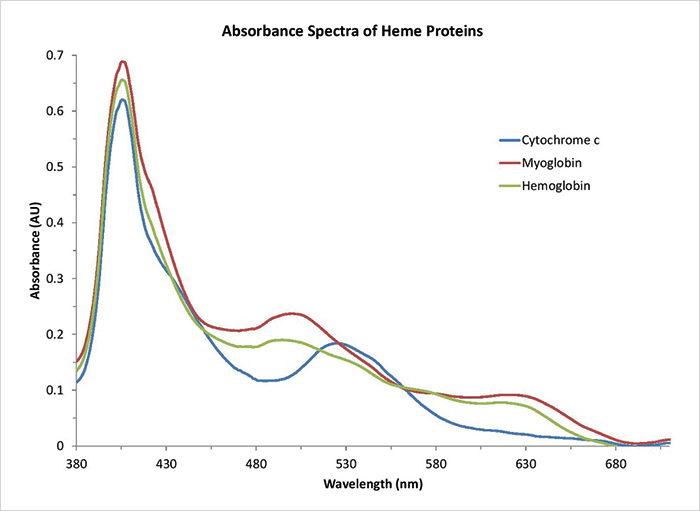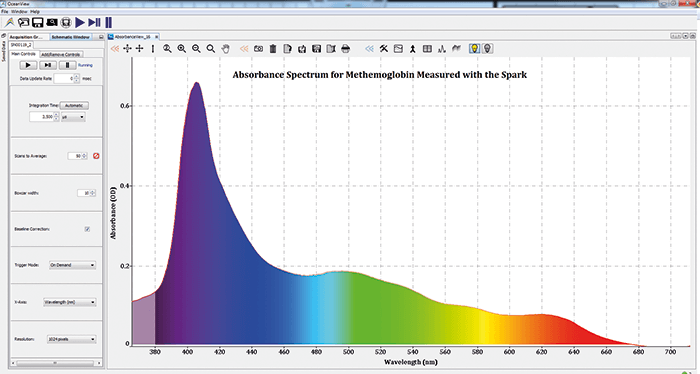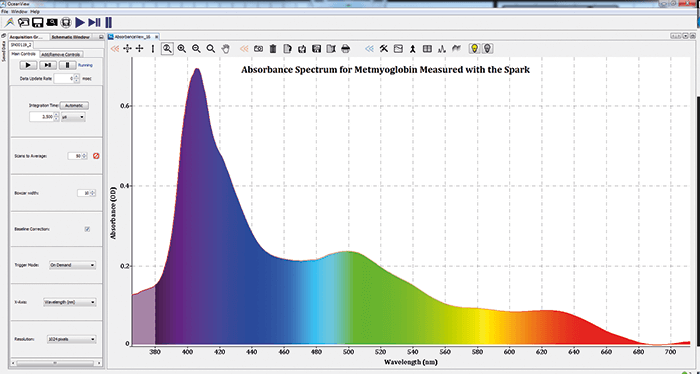In this application note, we focus on the visible response of the heme group using the compact Spark spectral sensor to measure absorbance spectra for the heme proteins hemoglobin, myoglobin and cytochrome c. The heme groups found in metalloproteins generate absorbance bands that vary based on the state of the heme group. These absorbance changes make UV-Vis spectroscopy a very powerful tool for studying heme proteins. Absorbance measurements can be used to study changes to critical protein parameters like protein conformation and to provide information on the binding and oxidation state of the heme prosthetic group.

Experimental Setup
We used a Spark-VIS spectral sensor with direct-attach cuvette holder-white LED module to measure the visible absorbance spectra for the metalloproteins hemoglobin, myoglobin and cytochrome c diluted in solutions. Spark integration time was set at 3. 5 ms, with 50 scans to average and boxcar smoothing width at 10. The solutions were prepared in water at a concentration of approximately 1 mg/mL. The samples were diluted as necessary to provide spectral data below 1 AU and pipetted into disposable cuvettes.







